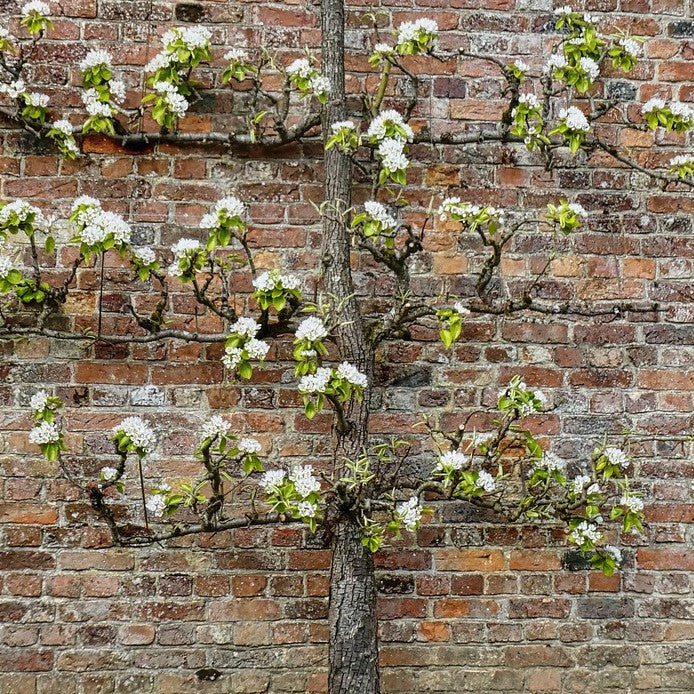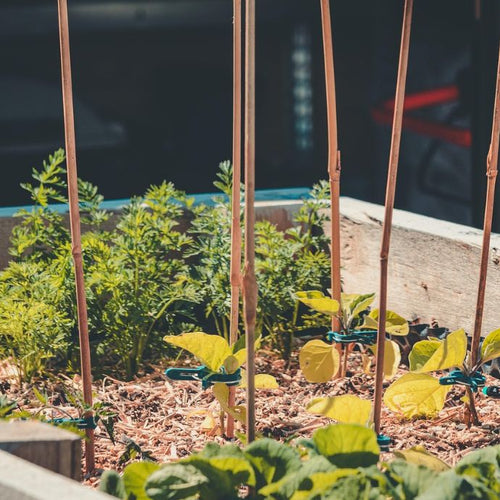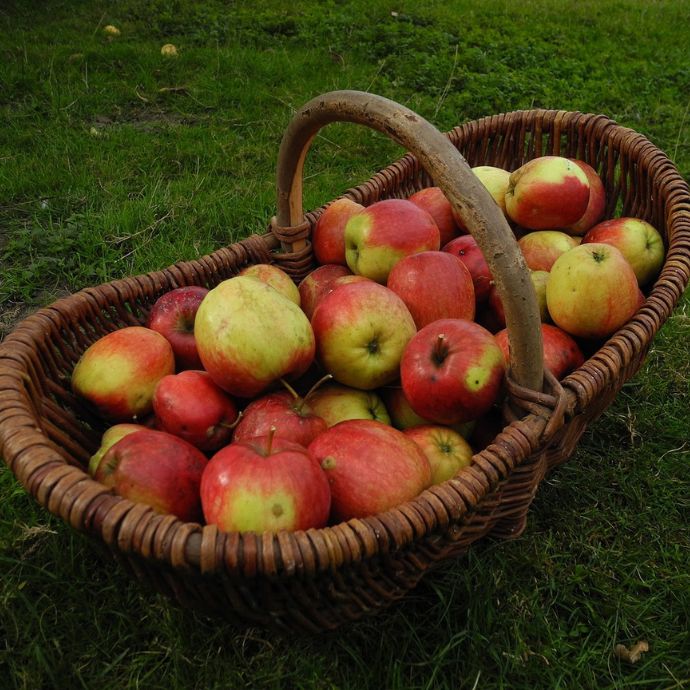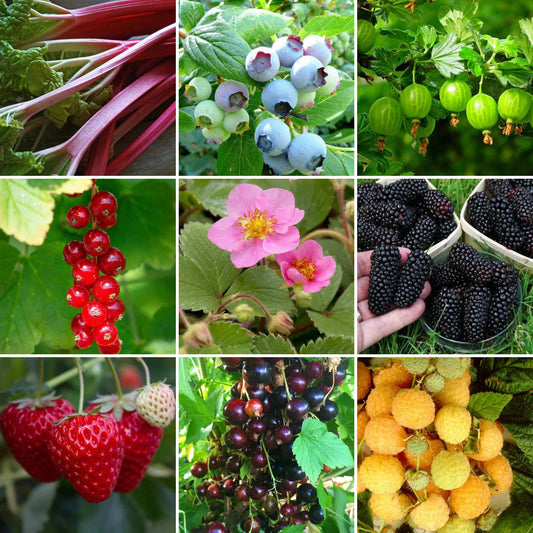Growing Raspberries: A Beginner’s Guide
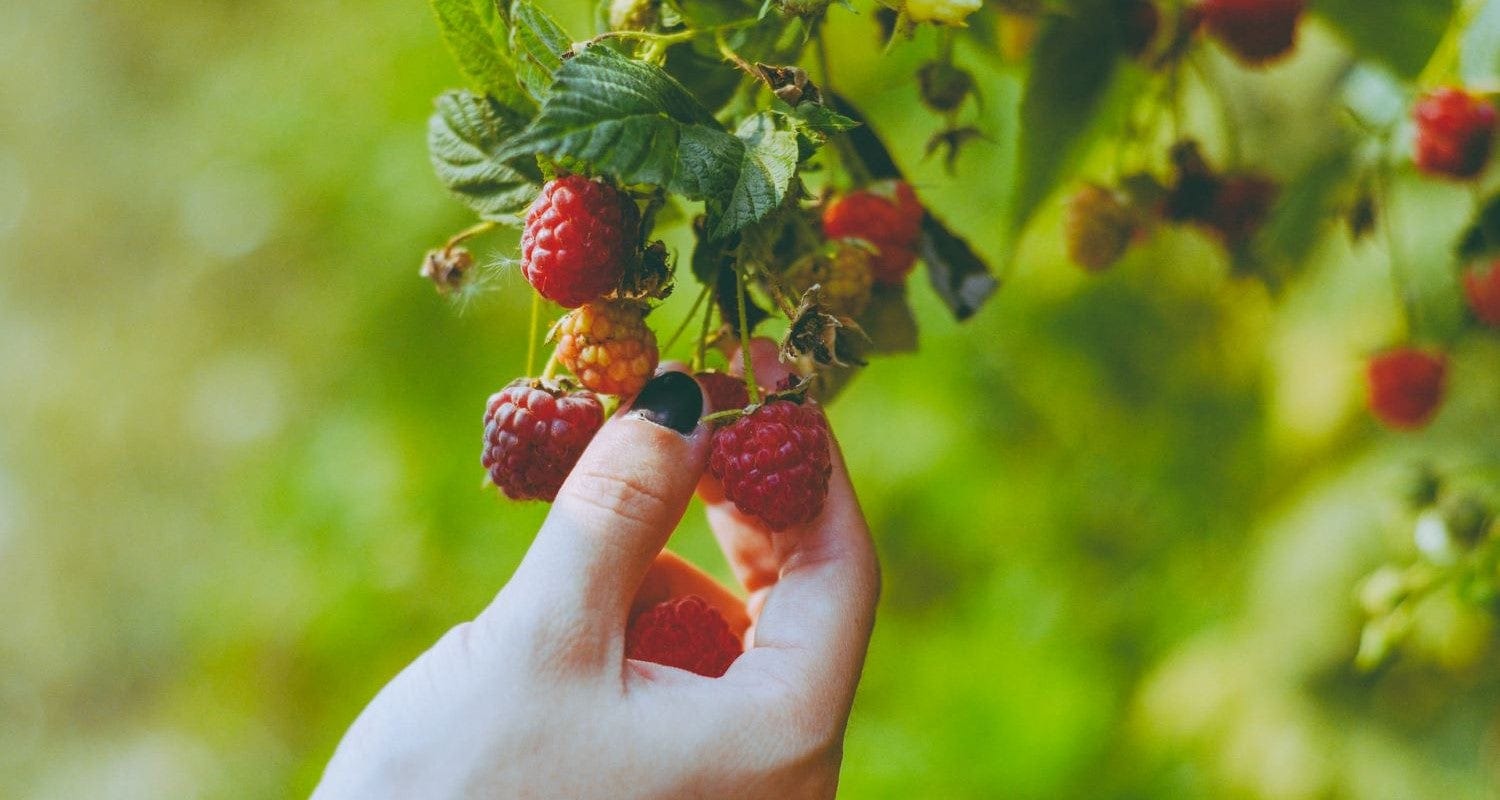
Raspberries are some of the easiest and most rewarding soft fruits you can grow at home. Ridiculously expensive in the shops, they’re tasty, plentiful and fresh from your garden, with no plastic packaging or squashed berries to deal with! We asked our soft fruit growers their top tips for growing raspberries and how to guarantee a successful crop right from the start.
Jump to:
- When to plant
- Where to plant
- Planting bare root raspberry canes
- Planting potted raspberries
- Spacing
- Supporting
- Growing in pots
- Watering
- Feeding
- Protecting your fruit
- Pruning
- Harvesting
- Storing
When to plant raspberries
The best time of year to plant your raspberries depends on whether you have bare root canes or potted plants. Potted plants can be planted at any time of year but bare roots can only be planted while they are dormant, between late autumn and early spring. You should avoid planting either kind if the ground is frozen or waterlogged.
What if you can’t plant straight away?
A potted raspberry plant can be kept in its nursery pot (or repotted if it looks like it needs it) for as long as necessary before going to its permanent home. If you can’t plant your bare roots straight away, keep them damp and frost free in a cool shed or garage for up to 48 hours. If the ground is frozen or waterlogged for longer than that, you’ll need a temporary home for your bare roots. If there’s a patch of garden you’re able to dig, make a trench in it and temporarily plant them here. (This is called ‘heeling in’.) Otherwise, a bucket of compost will do nicely.
Pick the perfect spot
Choosing the right place to plant your raspberries is essential - If you choose a sunny, sheltered spot with plenty of support so the plants don’t blow over, you’re pretty much guaranteed great results. This could be a sunny border next to a fence, a patio or a south facing wall. Raspberry plants can deal with a little light shade - in fact if your local climate is very hot, a bit of afternoon shade can prevent your plants from being scorched - but in most places you’ll get a bigger crop by growing in the sun.
The best soil for raspberries is rich, well draining, fertile and slightly acidic, but they’ll do fine in most ordinary garden soils. If yours is on the heavy or sandy side, you can enrich it by digging in plenty of compost.
Once you’ve chosen the perfect place, it’s time to plant your raspberries.
Planting raspberry canes (bare root)
On the day of planting, remove your bare roots from the packaging and soak the roots in a bucket of water for thirty minutes to an hour to untangle any that have knitted together in transit.The planting hole should be as deep as the roots and three times as wide. Position your plant so that all the roots are below ground, and spread them out gently. You can usually see the mark where the plant was in the soil before, as it’s darker than the rest of the stem. Fill in the hole and firm down the plant well before giving it a good watering in.

Planting raspberry plants (potted)
Remove your plant gently from the nursery pot. If the roots are pot-bound (tightly squeezed together in the shape of the pot) it’s helpful to tease them out a little before replanting. The planting hole should be as deep as the roots and three times as wide. Position your plant in the middle of the hole so that all the roots are below ground, and spread them out gently. Fill in the hole and firm down the plant well before giving it a good watering in.

Raspberry plant spacing
Soft fruit plants need to be planted with enough space between them to allow them to spread and for plenty of air to circulate between them - if they’re planted too closely together, there’s an increased risk of fungal diseases, damp and mould. As a general rule, raspberries should be planted 40-60cm apart. They may look sparse when you first plant them, but they’ll quickly branch out! If you’re unsure, there are exact spacing requirements for each variety on our website.
Supporting your raspberries
Raspberry canes can grow up to 2m tall, so you’ll need to make sure they’re well supported or they could bend and break. The easiest way is to grow them along a fence or wall. Attach long horizontal wires or strings to the fence, and tie in the raspberry plants as they grow.
Alternatively, if you want to go for a more free-standing solution, you can plant your raspberries alongside strong posts or canes, tying them in gently with string or soft plant ties.
Can you grow raspberries in pots?
Growing raspberries in a pot is a brilliant solution if you have limited space. You’ll need to choose a compact variety that won’t grow too tall, such as Yummy or Ruby Beauty. To plant, use the biggest pot possible - it should be at least 30cm deep and 30cm wide. Make sure that the pot has holes in the bottom for drainage, as roots can be damaged if they get waterlogged. Add some gravel or broken ceramics to the bottom of the pot and use a good quality garden compost. As above, spread a layer of mulch around your plant - its moisture retaining qualities are even more important for potted plants!
Watering
Raspberries don’t do well in dry soil, and need to be watered well for the first year after planting. After that you should be able to water less frequently as they become established, but you’ll still have to keep a close eye on them during long spells of hot or dry weather. Plants in pots will need more frequent watering throughout the year as they get much less rain.
Feeding
Your raspberries will benefit from a fertiliser boost in spring, when the plants are growing and the blossom starting to appear. A high potassium feed such as tomato fertiliser will give them all the nutrients they need to fruit well.
It’s also a good idea to mulch your raspberries in the spring - this means surrounding the base of the plant with a layer of compost, manure, woodchip or similar to suppress weeds and keep moisture in the soil.
Protecting your plants
Birds find soft fruits as attractive as we do, but I’ve found that raspberries aren’t as badly affected as other kinds of fruit. If you do have a problem with birds stealing your fruit, you’ll need to protect your crop. When the berries appear, cover your plants with netting to keep the birds off (don’t do this too early, when the plant is flowering, or bees won’t be able to get access and pollinate it). Secure your net into the ground or to the fence to stop it blowing away, or birds getting caught in it. A more long term solution is to cover your plants with a fruit cage - these can be found online or if you’re feeling handy, you can build your own.
Slugs are less of a problem for raspberries, as they’re far enough off the ground, but if you do get slugs that like to climb, you can deter them by surrounding the base of the plants with a barrier of crushed eggshells, gravel or woodchip, which they can’t easily cross.
Pruning your raspberries
Summer fruiting raspberries fruit on old canes which should be cut down to the ground after harvest - this leaves room for young, new canes to grow. You will be able to tell which ones have fruited as they’ll be stiff and brown or white, whereas the new ones will be green and bendy. For autumn-fruiting raspberries, cut the fruited canes back all the way to the ground late in the winter. This will clear the way for new canes to emerge in the spring, which will fruit during their first year.
You will also find small raspberry plants cropping up around the base of your canes. These are suckers, or baby plants, which you can leave in place if you like, but we’d recommend you pull them up and relocate or dispose of them as they can become too congested, cutting off sunlight, competing for the same nutrients as the parent plants and reducing the quality of the fruit overall.

Harvesting your raspberry crop
Your raspberries are ready to harvest when they’re deep pink-red and you can pull them away from the plant with no resistance. For summer fruiting varieties this will be between June and August, and autumn fruiting varieties between August and October. Only pick the fruit when it’s turned completely ripe - if you’re not sure, try one or two fruits before picking them all. It’s best to pick your raspberries on a dry day if possible, as wet raspberries can easily go mouldy.
How to store your raspberries
Raspberries will keep in the fridge for a few days, and they freeze well straight from the plant. You can also preserve them by making jam or syrup, or drying them using an oven on a low heat or a dehydrator. Raspberry plants can be very prolific, so it’s a good idea to have lots of recipes to hand in case you’re inundated. Pick them fresh every day, then eat them fresh with or without cream, use them in pavlova, trifle and summer pudding or make them into juices and smoothies.

Last updated: 13/11/2023




